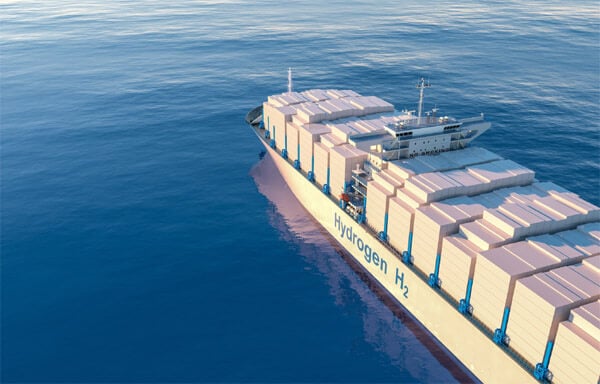South Korea Invests in Ambitious Project for the World's Largest Liquid Hydrogen Transport Vessel
South Korea is gearing up too make waves in the hydrogen shipping industry with a new public-private partnership aimed at creating the largest liquid hydrogen carrier on the planet. The government sees this as a golden chance for local shipbuilders to step into a leadership role, building on their strategy of focusing on high-value vessels.
An official from South Korea’s Ministry of Trade, Industry, and Energy emphasized the challenges ahead: “Building liquefied hydrogen carriers involves significant technical hurdles and ample initial risks. It’s crucial for us to take charge in securing innovative solutions for our shipbuilding sector.” They also mentioned plans to streamline regulations and systems that would help Korean technology set global benchmarks.
The initiative kicks off with an notable $39.5 million investment slated for 2025, bringing together major players like Hyundai Heavy Industries, Hanwha Ocean, and Samsung Heavy Industries alongside experts from universities and research institutions.
The timeline is ambitious: they aim to construct a demonstration vessel capable of holding 2,000 cbm by 2027. By 2030, they expect to finalize technology for larger ships and develop a vessel with a capacity of 40,000 cbm by 2032.The ultimate goal? A massive commercial carrier boasting 160,000 cbm by 2040.

Korea aims to carve out its niche in commercial hydrogen shipping by the ’40s (MOTIE)
To build these vessels effectively requires advanced cooling tech; they’ll need storage tanks that can handle temperatures as low as -253 degrees Celsius—much colder then what LNG demands at -163 degrees Celsius. A vacuum insulation system is part of their vision too.for propulsion methods, they’re looking at using gas generated from evaporating hydrogen combined with fuel cells or hybrid engines equipped with energy storage systems.
The presentation acknowledged that no commercial liquefied hydrogen carriers exist yet; however, there are currently 43 R&D projects involving over 100 organizations working towards this goal. They plan to consolidate these efforts into one cohesive project under the new task force led by top domestic experts in liquefied hydrogen technology.
The proposed design for Korea’s demo ship will stretch about 304 feet (92.8 meters) long and hold around140 tons (2,300 cbm), setting it up as potentially the largest vessel of its kind—a pivotal move toward establishing this emerging market.
Content Original Link:
" target="_blank">


















































